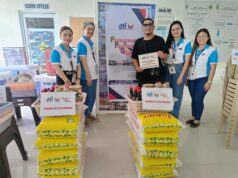CLARK FREEPORT, Pampanga- Newly installed Clark Development Corp. (CDC) president and chief executive officer Benigno Ricafort has noted that only about 300 hectares of this freeport’s 4,500 hectares are available for new investments.
Because of this, the CDC is set to develop an initial 10,600 hectares of the 29,000-hectare so-called Clark sub-zone, still largely undeveloped, mostly within the geographical domain of Tarlac province.
"These are areas which we think are accessible for immediate development," Ricafort noted, referring to the sub-zone as "a new frontier".
He said that a master development plan for the area, also referred to as Sacobia, will be ready by the end of this month.
In his first press conference here, Ricafort, who is now on his second week as chief executive of the CDC which runs this freeport, said that while he is supportive of the Joint Management Agreement (JMA) his predecessor forged with Aeta tribal folk, he is set to review it.
The JMA entitled the CDC to "co-manage" with the Aetas some 10,000 hectares of tribal ancestral lands in Sacobia. Under the agreement, the CDC will develop and manage the area and open it to investors, with the Aetas entitled to 20 percent of income to be derived by the CDC from the area.
A congressman from Pampanga had wanted that the sharing be reversed, with Aetas getting 80 percent and CDC only 20 percent. Ricafort, however, noted that the 80 percent share of the CDC under the JMA would also be used for capital and other expenses at Sacobia where many areas are totally without infrastructure and other basic community needs.
He also noted that reversing roles would be impractical, as the Aetas are not yet prepared to negotiate for foreign investments. With the development of Sacobia pending, Ricafort expressed concern over the growing number of "informal settlers" in the area.
Most of the settlers are farmers who were allowed by the Philippine Air Force to till lands at Sacobia before the CDC was formed in 1993. Sacobia used to be part of the military reservation of the US air force then based at Clark, but jurisdiction in the area was reverted back to the Philippines even before the US military finally abandoned Clark in 1991.
"If they are to be moved out, there will be a demand for disturbance compensation for their farms, but the problem is that they have reportedly expanded their farms in anticipation of possible compensation," Ricafort said.
He said his staff is studying who among the settlers were initially allowed by the military to develop parts of Sacobia, implying that those who moved in later would not be entitled to any compensation.
Ricafort also vowed to involve local officials in towns and cities around Clark in the "participative management" of this freeport. He said CDC will expand its role in helping in the development of nearby communities.
About half of the 4,500-hectare main freeport is under the jurisdiction of the CDC, the other half under the scope of the Clark International Airport Corp. (CIAC) which used to be a CDC subsidiary but was recently declared as being under the Bases Conversion Development Authority (BCDA). Much of the areas under the CIAC, however, would be covered by the upgrading of the Diosdado Macapagal International Airport into a premiere gateway by 2010.




